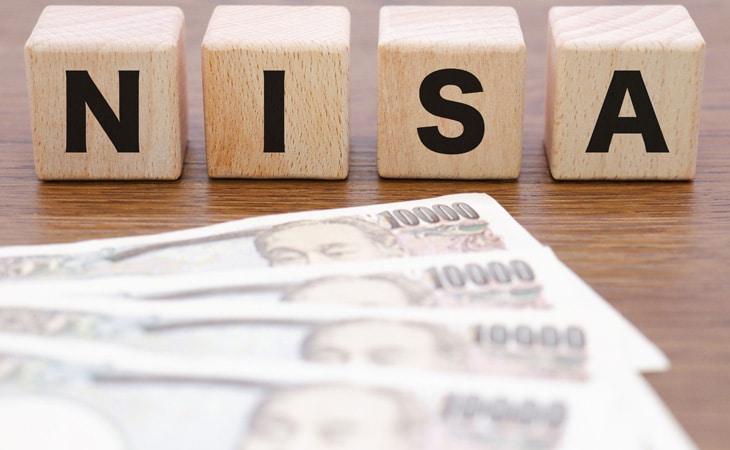At Argentum Wealth, we specialize in assisting the foreign community with their financial needs. This typically excludes domestic account management.
However, our commitment to providing valuable insights to our clientele has led us to write this article. We look to shed light on an important financial instrument in Japan – the NISA.
While our advisory firm primarily caters to expatriates, we believe that comprehending how NISA accounts function can be a valuable resource for those navigating the intricacies of financial planning in Japan.
The Background on NISAs
NISA, which stands for Nippon Individual Savings Account, is a tax-exempt government investment account for anyone over 18. The Japanese government created NISA to encourage people to save and invest, mostly in Japanese stocks and mutual funds, tax-free for 5-year periods.
There is much confusion surrounding NISAs.
They were initially rolled out in 2014 and designed to be a temporary program – with an expiration date at the end of 2028. The government was concerned about the lack of investment the average Japanese household was making in the stock market, and the shortfall many had in retirement savings. Japan has historically had a very high savings rate, with individuals receiving 0% or negative interest on their cash savings deposits in local banks.
NISA accounts were created to encourage savings and investment by allowing investors to waive capital gains and dividends taxes for a limited period. Any investment profits made in a NISA will not be subject to capital gains taxes, saving upwards of 20 percent of profits otherwise paid in taxes. Additionally, investments that paid a dividend could be reinvested without paying the government a portion of the income.
With the current General NISA, after five years you can withdraw the value of your account without paying any capital gains taxes. Once your NISA period is over, you can reinvest your capital into another NISA account, effectively restarting the five years. The Tsumitate regular investment option started in 2018 and runs for 20 years. There is a limit to the amount of money you can invest in a NISA, which we’ll go into more detail shortly.
Since it’s launch there have been several updates to NISA, with another round of updates going into effect in 2024.
NISA was modeled after the British ISA (Individual Savings Account) system. The scheme was intended to bridge the gap between large, unproductive savings accounts and small investment accounts of individuals in Japan. However, its adoption has been rather limited. According to the FSA, last year there were only 17 million NISA accounts – in a country with 60 million households.
Furthermore, many of those 17 million accounts are dormant, with 40% uninvested during all of 2021. Even after NISA was introduced, Japanese households kept over half their assets in cash.
Why is the adoption of NISA and other schemes so low in Japan?
The main hindrances are due to the complicated system, financial illiteracy, and low total investment amounts available in the schemes.

NISA’s Until 2023 – How Does it Work?
NISAs have three options: Tsumitate (Regular Investing), Ippan (lump sum), and lastly – Junior NISA. You can only use one of these options.
Tsumitate
For regular investments, the limit is ¥400,000 per year (¥33,333 pm). The investment options are limited to a selection of 180 assets pre-approved by the Japanese Financial Services Agency. The government elected to limit the number of investment options to encourage “diversification and sensible investment.” Total Tax Exemption is no more than JPY 8M, with a five-year time limit.
Ippan
The limit is ¥1,200,000 per year for lump sum investments. In this tier, there are fewer restrictions on available assets, meaning you could invest in individual stocks, funds, ETFs, and bonds. There are some restrictions regarding riskier fund types. Total Tax Exemption no more than JPY 6M.
Junior NISA
For lump sums up to ¥800,000 per year can be invested in conjunction with General NISAs, in the name of account holders younger than 17, with the money only accessible to them from 18. A parent or guardian would set these up.
Until 2023 Tsumitate & General NISA Summary Table
| Tsumitate Nisa | General Nisa | Junior Nisa | |
|---|---|---|---|
| Annual Investment Quota | ¥400,000 | ¥1,200,000 | ¥800,000 |
| Tax Exempt Holding Period | 20 year term | 5 year term | 5 year term |
| Tax Exempt Holding Limit | ¥8,000,000 | ¥6,000,000 | ¥4,000,000 |
| Account Duration Period | Until 2042 | Until 2028 | Until 2023 (the clients can keep their account until they turn 20) |
| Investment Product | Investment trusts suitable for accumulation and diversified investment | Listed stocks, investment trust etc. | Same as the general NISA |
| Age Limit | 18 Years | 18 Years | Can’t make any withdrawals until the clients are 18 years old and can only hold the account before the clients turn 20 |
With the current NISA program expiring at the end of 2028, the Japanese government needed to consider what they would do. Eventually they decided to expand and alter the program. There will be changes to the Tsumitate NISA (regular) and the Growth Investment NISA (Ippan Lump Sum NISA) that will take effect with the New NISA program in 2024.
Let Us Help You Grow Your Wealth
Talk with us today!
What’s the Deal with the New NISA from 2024?
From 2024, there are several changes, as explained below.
Tsumitate
The limit will be ¥1,200,000 per year (¥100,000 pm) for regular investments. The investment options will still be limited to a selection of over 180 assets pre-approved by the Financial Services Agency. There will be no more time limit.
Ippan
The limit will be ¥2,400,000 per year for lump sum investments. In this tier, there are fewer restrictions on available assets, meaning you could invest in individual stocks, funds, ETFs, and bonds. There will be no more time limit.
No new Junior NISAs will be available as of now.
Total Tax Exemption for both is still the same as before – JPY 18M. However, JPY 12M must be in the Growth Investment NISA (lump sum) and you can now invest in the Tsumitate (regular) and Ippan (lump sum) in the same year.
With the 2024 NISA, any withdrawals can be taken and replaced in the future without loss of tax-exempt investment allocation; previously this was not the case.
2024 Tsumetate & Growth Investment NISA Summary Table
| Tsumitate Nisa | Growth Investment Nisa (Previously General Nisa) |
|
|---|---|---|
| (Can be used together) | ||
| Annual Investment Quota | ¥1,200,000 | ¥2,400,000 |
| Tax Exempt Holding Period | Indefinite | Indefinite |
| Tax Exempt Holding Limit | Total ¥18,000,000 | |
| ¥12,000,000 | ||
| Account Duration Period | Permanent | Permanent |
| Investment Product | Same as the current Tsumitate Nisa | Listed Stocks, Investment Trust etc.* |
| Age Limit | 18 Years | 18 Years |
| Relationship with the current system | The Tsumitate Nisa and General Nisa established before the end of 2023 will not be tax exempt under the new system. | |
| *:some products are subject to exclusions and have not been finalized. According to the website of the Financial Services Agency, at present, "(1) stocks to be sorted and managed, (2) investment trusts with a trust period of less than 20 years, high-leverage type and monthly distribution type investment trusts, etc." are excluded. (2) was investable under the current general NISA, but was excluded under the new NISA as it was judged unsuitable for long-term investment. | ||

What are the issues for Foreigners?
Although opening a NISA may initially seem like a no-brainer, there are some issues with NISA that make alternatives preferable; the devil is in the details.
The principal problem with these accounts is that many ex-pats may not have access to them. You would have to go into a local Japanese bank or brokerage and have a good command of Japanese speaking and reading for them to proceed in the application process, which is time-consuming and overly complicated.
Service and support will also all be in Japanese, and you will need to navigate Japanese websites and staff to make updates and changes to your account(s).
American expats do not get the tax relief of NISAs, as they are treated as standalone brokerage accounts under US tax rules. Thus, Americans wouldn’t benefit from the tax-free capital gains and dividend payments.
Generally foreigners in Japan need investment accounts that have built-in flexibility and are portable. So if they decide to live and work in another country, they can continue with their accounts and easily withdraw. NISA accounts are always kept with the original bank or brokerage for the plan’s duration; they aren’t transferable if you are unhappy with your provider.
Additionally, there are issues with restrictions on what assets you can purchase in NISA accounts. The New 2024 NISA plan will only allow you to buy a select number of assets to be determined. Since they removed the time restrictions from 2024, they now deem certain assets too risky for long-term investment and have removed them from the NISA accounts.
Another issue with pre-2024 NISA accounts is their strict rules regarding contributions and withdrawals. For example, the General NISA has an investment horizon of only five years; the Tsumitate NISA has an investment horizon of 20 years. Any withdrawals made cannot be replaced, meaning you have already used your quota even though the money is no longer invested.
What are the Pros and cons of the 2024 NISA
Pros
- Don’t need to pay Capital Gains tax or Income tax on dividends
- Both lump sum investments and regular monthly investments are available
- Can buy stocks and mutual funds based in Japan
- Open to anyone over 18 years old in Japan
- Now promotes long-term investing as opposed to previous short-term profit-taking
- Annual investable amount of 3.6 million JPY per year up to a JPY 18M maximum
Cons
- Available in Japanese language only
- It can be challenging to understand and set up – even for Japanese
- 18M JPY maximum investable amount
- Overseas investments are limited
- Lack of support from an advisor; you will need to manage it on your own
- You can’t continue if you move overseas; you need to be a resident of Japan
- There are no tax benefits and potential problems with reporting in the US for Americans
- Cannot use losses in NISA to offset profits in another account

Final Thoughts
The Japanese NISA has gained significant traction among residents of Japan seeking tax-efficient investment opportunities.
While NISAs offer tax advantages, they come with certain limitations. These include annual contribution limits and restrictions on investment choices. There are added disadvantages for foreign nationals living in Japan, such as lack of portability, limitations on international investment choices, and challenges around language. These limitations can make international investment accounts more suitable.
International accounts afford our clients broader investment opportunities, greater flexibility, tax efficiency, and the ability to diversify across global markets, potentially yielding a more robust and tailored financial strategy to meet their specific objectives and enhance long-term financial security. US clients also have the option to have US-based investment accounts, which will work better for them than NISAs.
Argentum Wealth has many years of experience helping foreign nationals living and working in Japan. We can provide a wide range of alternative international investment solutions to suit the needs of our international client base. Please get in touch with us for a free consultation and learn more about your options while living abroad.
Argentum Wealth does not provide tax, legal or accounting advice. This material has been prepared for informational purposes only, and is not intended to provide, and should not be relied on for, tax, legal or accounting advice. You should consult your own tax, legal and accounting advisors before engaging in any transaction.
Argentum Wealth Management is licensed through the Japanese Financial Services Authority to give financial advice. The FSA strongly recommends that you only receive financial advice and services from a locally licensed and regulated firm.













